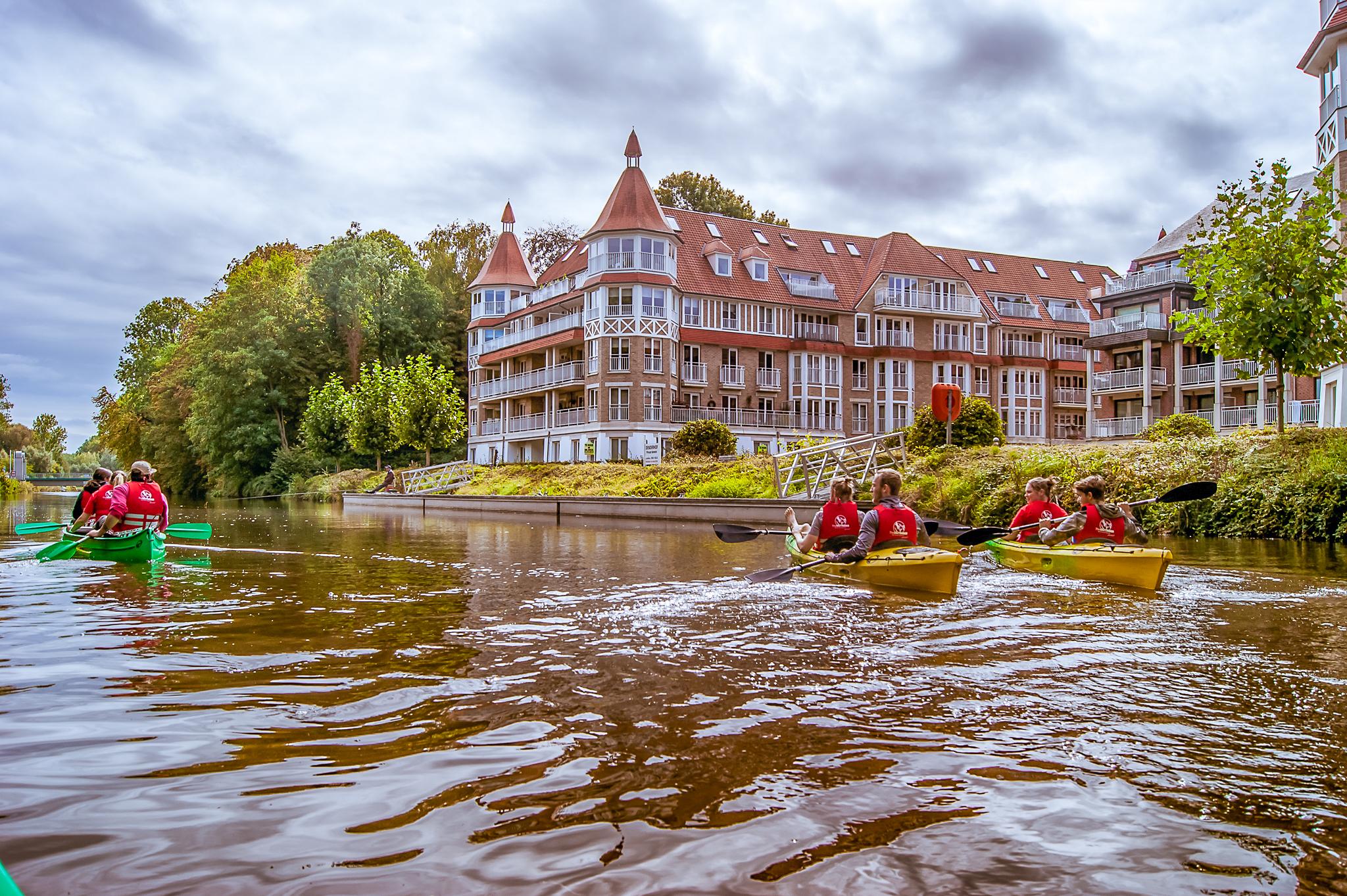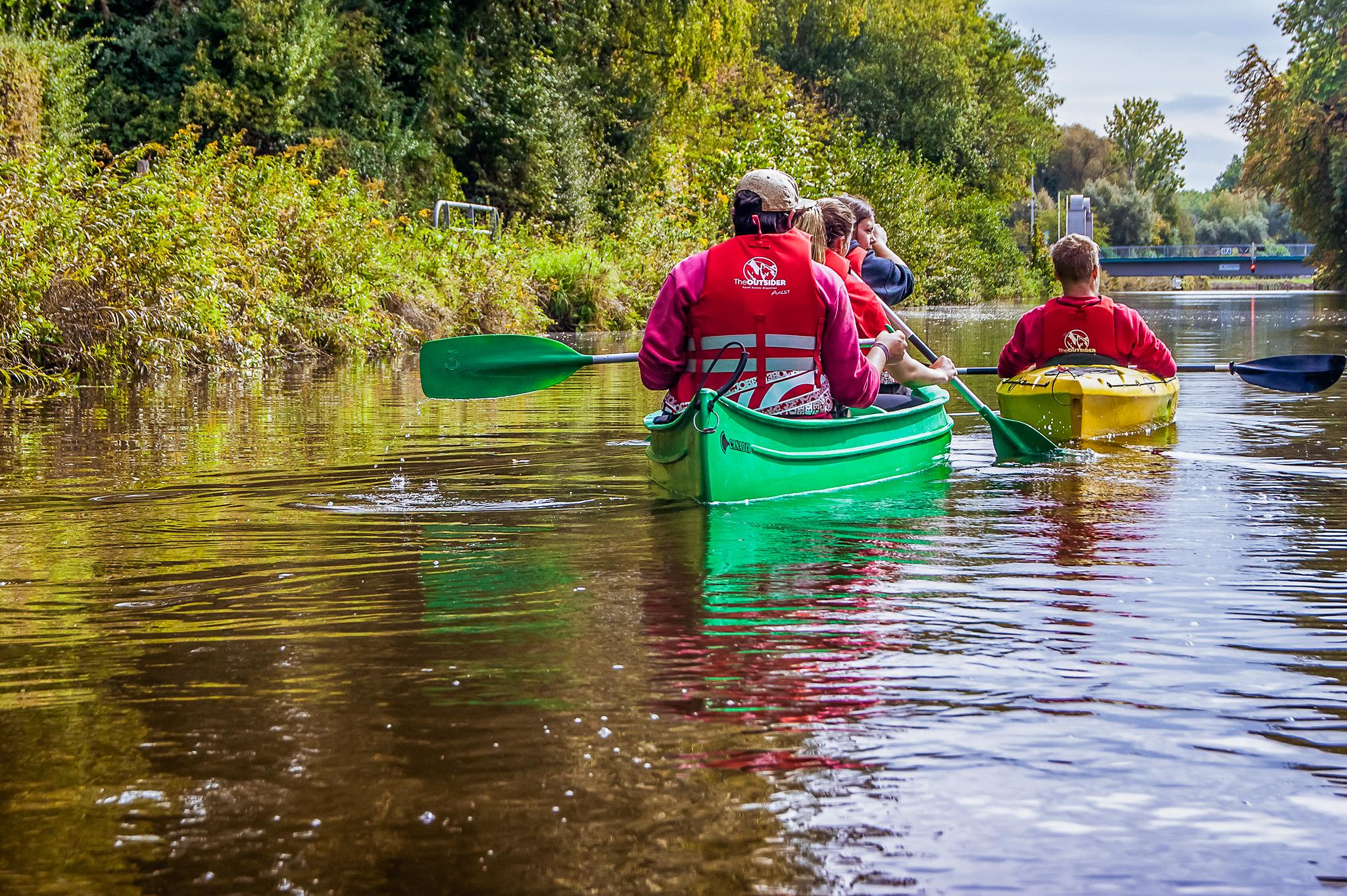
The Dender
The Dender is a river in Belgium in the Scheldt basin. Over a length of 65 km, it flows through the provinces of Hainaut, East Flanders, and Flemish Brabant. The Dender originates in Ath through the confluence of the Eastern Dender and the Western/Small Dender and flows into the Scheldt in Dendermonde on the right bank.
Nowhere does the Dender appear as impressive or the environment as green and pristine as in Ninove. However, do not be misled, as the same lovely river sometimes turns into a raging torrent in no time. The name "Dender" comes from the Celtic "Tanera," meaning "the turbulent, the roaring."
The Dender has always been a difficult river to navigate due to the strong ground gradient. In the past, the stream was 10 to 12 m wide and +/- 80 km long. In the summer, at low water, it was possible to cross the river on foot at various places, while in the winter, large floods regularly occurred. The Dender depends for about 90% on rainwater.
The Dender in history
In the 10th century, the first primitive locks appeared: the "portae aquarium", consisting of thick planks that slid back and forth on either side into wooden poles to regulate the water level. About a century later, with the rise of trade and heavier ships, it became necessary to increase the navigability of the Dender.
In 1285, the first canalization became a reality, which also led to the creation of the first toll regulations. In addition to wine, honey, velvet, and linen, peat, wood, iron, straw, grain, and salt were also shipped on the Dender. In the 15th century, Flemish, Dutch, and English cheeses were also shipped, along with stockfish, cloth, saffron, cinnamon, pepper, sugar, wine, beer, corn, peas, and so much more.
The Dender was often the subject of conflicting interests at that time: on one hand, sailors wanted to navigate at a high water level, and on the other hand, farmers needed low water for their meadows. In addition, millers wanted to use as much water as possible, which also threatened to halt shipping.
In the 17th century, shipping recovered, and the Dender became an important link between Hainaut and the Scheldt. Bridges, new locks were built, the bed was widened, and the river was canalized.
In 1840, the nascent Belgian state took over the administration of the Dender, and the "new Dender" became a reality.
In the 19th and 20th centuries, numerous factories were established along the Dender, such as the match industry. After WWII, the importance of the Dender visibly decreased. A recalibration never occurred, and the river has become economically of little use: the large ships of today cannot access the Dender, and it is mainly used for recreational sailing."

The Dender now
The impressive nature with various biotopes, blue herons, and numerous meadows and marshes is indeed impressive to enjoy during a pleasure cruise. Nowadays, there are many efforts to purify the Dender water, which have led to a remarkable improvement in water quality and fish stocks.
Via the towpath, you can cycle from Geraardsbergen to Dendermonde, where you will encounter picnic spots with shelters here and there, and for pleasure boating, there are various moorings and numerous hospitality options.
Today, the Dender has become an important tourist asset. Not for nothing do connoisseurs call it one of the most beautiful rivers to sail on. What the Thames is to London and the Seine to Paris, the Dender is to Ninove...
